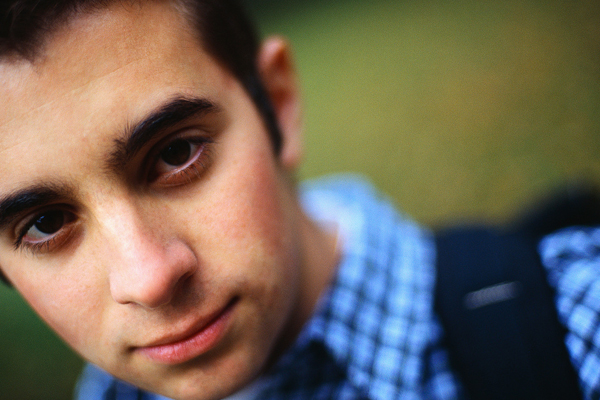Help Your Teen Practice Good Hygiene Habits
Are good hygiene habits part of your teen’s back to school routine? Check out these easy reminders to help keep your teen happy and healthy, and continue these habits into adulthood.


SPROUTING, CHANGING, GROWING
Voice changes. Acne. Raging hormones. At some point, every little boy and girl grows up and into adulthood. The stage of life when this is most present is puberty. What’s the best way to explain what your child is going through? Less is usually best. “Normally, if kids ask questions, they don’t need detailed answers,” says Dr. Reh. “Answer just the question they ask. Keep it very simple; tell them it’s a normal process.” Parents should also be prepared to answer questions, again in simple terms, about what’s happening with the opposite sex.
FOR GIRLS ONLY
The first signs of puberty are either breast buds or hair growth in the private area, says Dr. Reh. In addition, girls will experience a buildup of fat in the breasts and around the hips, then the arms, legs, hands and feet will also grow taller early in puberty. “Later, around stage four of puberty, menstruation will begin,” says Dr. Reh.
FOR BOYS ONLY
“For boys, the earliest beginning signs of puberty should not start before age nine and they can be as late as ages 13 to 14,” says Dr. Reh. “The first sign for boys is actually testicular enlargement.” As time goes on, boys will begin to experience increased body hair and their voices will crack and become deeper. The growth spurt for boys is in the later stages of puberty.
LATE BLOOMER
Some children will experience delayed puberty. “It’s actually the most common reason for being shorter than your friends,” says Dr. Reh. “And it tends to be a benign [non-threatening] process.” If you have concerns about early or late puberty development, talk to your child’s pediatrician.
FAST FACTS
Dr. Christina Reh completed her pediatric internship and residency at CHOC and her endocrinology fellowship at Children’s Hospital of Los Angeles. She is a member of numerous groups, including the Endocrine Society and the Pediatric Endocrine Society.
Dr. Reh’s philosophy of care: “I approach patient care as if each child is potentially my family, letting parents know what the options are for treatment, or no treatment and incorporating what they want.”
EDUCATION
Loma Linda University School of Medicine
BOARD CERTIFICATIONS
Pediatrics and Pediatric Endocrinology

Are good hygiene habits part of your teen’s back to school routine? Check out these easy reminders to help keep your teen happy and healthy, and continue these habits into adulthood.


A poor attitude is a hallmark of teenagers, a CHOC pediatric psychologist tells CHOC Radio. Dr. Mery Taylor recently stopped by Seacrest Studios to talk about why teens often have bad attitudes, and what parents can do to mitigate the effects of a dour disposition.
Lots of kids and teens have to cope with acne. Because it’s so common, acne is the subject of much discussion — and many myths. By clearing up some of the common tales about acne, you can help your son or daughter get through it. Check out the following facts from Kids Health, an online resource for parents on choc.org.

Kids and Spine Issues
Scoliosis is a medical condition in which the spine is curved in either an "s" or "c" shape. If caught early, it can be treated with a bracing program.
Kids and Heart Surgery
In the newborn population, there are many heart conditions that may need surgery. Many of these heart surgeries are new at least in the past 10 to 20 years.